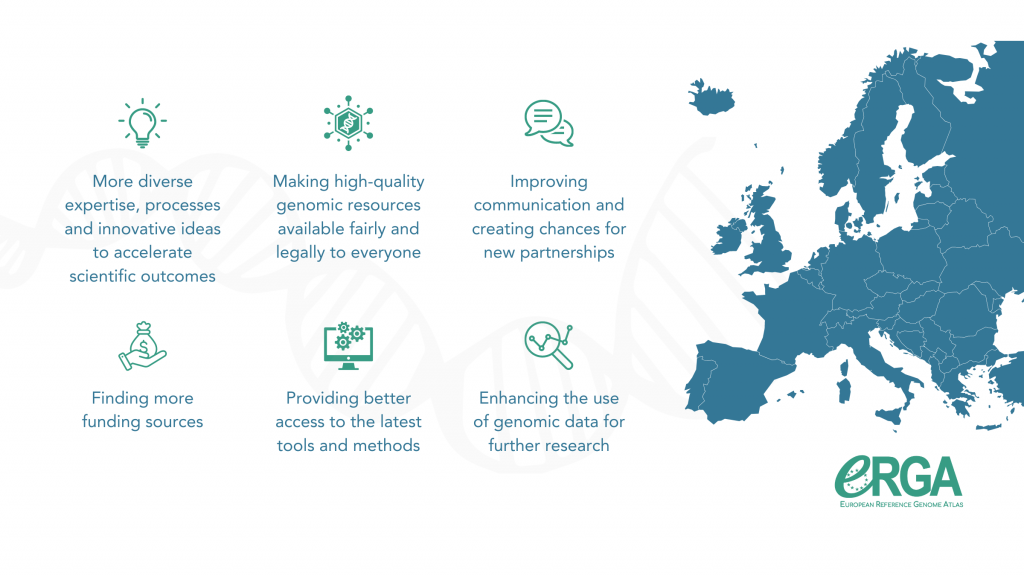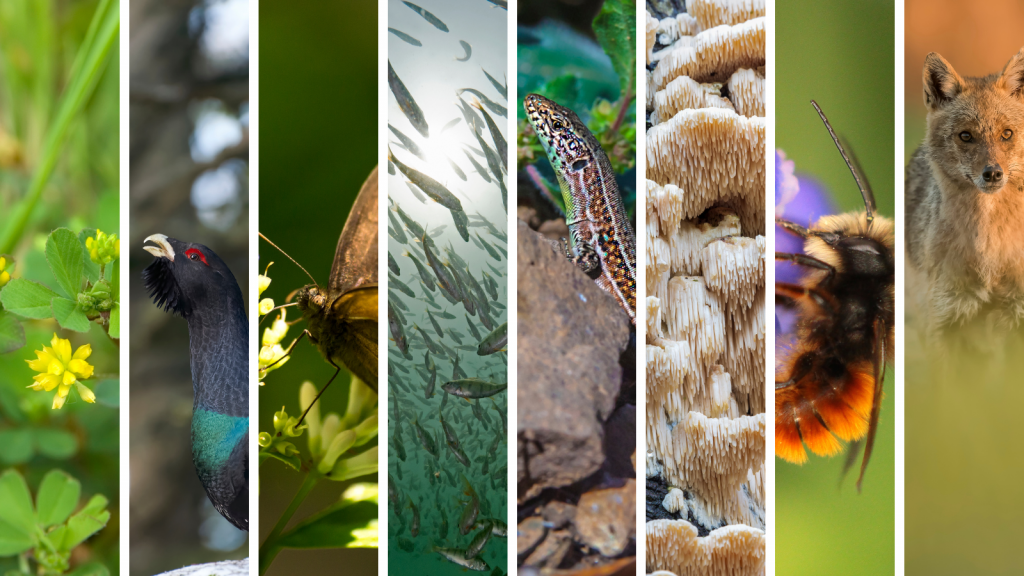The European Reference Genome Atlas (ERGA) Pilot Project reports its success in uniting researchers from across Europe to produce high-quality reference genomes for 98 species. This continental effort is setting the stage for a new, inclusive and equitable model for biodiversity genomics. This resulted in several publications, which have been published as special issue by npj Biodiversity today. With our InvertOmics project, we also contributed to this pilot study by sequencing the reference genome of the nemertean Emplectonema gracilis, a green slime worm (see the separate paper and blog). Due to this, we were also involved in two papers: one about the pilot project itself and another one about the procedures were how to select species (paper about ERGA pilot, paper about selecting and contextualising species). This is one of the many strong accomplishments of this pilot project. Moreover, it set the stage for the application of the Biodiversity Genomic Europe (BGE) project.
Both papers were published as preprints before (preprint about ERGA pilot, preprint about species selection) and more the details of each paper were already presented in two previous blog posts (post about ERGA pilot, post about species selection). This great effort of the pilot were lead by Ann M Mc Cartney, Giulio Formenti, and Alice Mouton and they did a tremendous job of getting all the different providers together, getting the samples to the sequencing centers and the data collected. Therefore, thanks to the great work you did throughout.

This pioneering initiative assembled a large collaborative network of researchers and institutions across 33 countries to produce high-quality reference genomes of 98 European species. This marks a significant milestone in the quest to create a high-quality reference genome database for all European animals, plants, and fungi. The Pilot Project has provided valuable lessons and highlighted key challenges, positioning ERGA as a model for decentralized, inclusive, and equitable biodiversity genomics initiatives around the world. The collection of papers of the special issue provides a broad overview of the Pilot Project, the sample collection and processing procedures and insights into national node developments that resulted from the Pilot Project. The collection will continue to be added to as papers associated with the Pilot Project become available over time.
Among many of the project’s milestones are the first chromosome-level genome assemblies of species from Greece, one of Europe’s most biodiverse countries. Species such as the Cretan wall lizard and Aristotle’s catfish were sampled by local researchers in Greece to produce genomes that are now openly available for anyone across the world to access and study. This is a great example of what can be achieved by uniting an international community of biodiversity researchers, fostering collaboration between and within countries. The ERGA Pilot emphasized equity and inclusion, with the goal that genomic research and resources are accessible to all, regardless of geographical boundaries. For many of the participating researchers and countries, the project offered the first opportunity to actively engage in the generation of state-of-the art reference genomic resources for their native biodiversity.

Photos by ©Mantonature, ©Cucu Remus, ©dadalia, ©scubaluna, ©Kristian_Nilsson, ©AlbyDeTweede, ©Carine Carnier, ©Daniel Jara from Getty Images via Canva.com
The ERGA Pilot was also successful in building momentum and bringing visibility to the growing importance of biodiversity genomics in Europe and beyond. Genomic data hold immense potential to inform conservation actions for endangered species and unlock discoveries in the fields of human health, bioeconomy, biosecurity and many other applications. Among the species sequenced by the project is for example the greater argentine – a commercially important fish species from the northern Atlantic. This new reference genome will enable scientists to make more accurate assessments of the genetic status of the species’ populations, ultimately guiding management decisions to ensure that fishing practices are sustainable and responsible.
As the global scientific community strives to unlock the full potential of genomic data, the establishment of a Europe-wide collaborative network under the ERGA umbrella accelerates scientific progress and facilitates its translation into tangible benefits for biodiversity and society. Additionally, the network helps researchers at all career stages to find and share opportunities for training, partnerships, and funding.
Mc Cartney, A.M., Formenti, G., Mouton, A. et al. The European Reference Genome Atlas: piloting a decentralised approach to equitable biodiversity genomics. npj biodivers 3, 28 (2024). https://doi.org/10.1038/s44185-024-00054-6
Böhne, A., Fernández, R., Leonard, J.A. et al. Contextualising samples: supporting reference genomes of European biodiversity through sample and associated metadata collection. npj biodivers 3, 26 (2024). https://doi.org/10.1038/s44185-024-00053-7
![]()
